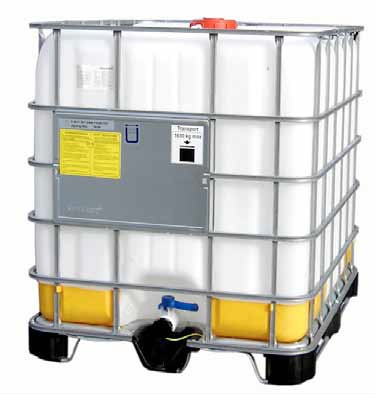Nouryon completes organic peroxides expansion in Mexico
Nouryon (formerly AkzoNobel Specialty Chemicals) has more than doubled capacity for emulsion-based organic peroxides at its site in Mexico to meet increased customer demand in the North American PVC market.
February 15, 2019

Nouryon (formerly AkzoNobel Specialty Chemicals) has more than doubled capacity for emulsion-based organic peroxides at its site in Los Reyes, Mexico to meet increased customer demand in the North American polyvinyl chloride (PVC) market.
|
Emulsion-based peroxides are safer than traditional solvent-based peroxides according to Nouryon. |
|
The flooded Arkema organic peroxides plant in Crosby, Texas, where explosions occurred due to flooding, loss of electricity and refrigeration in the aftermath of Hurricane Harvey in 2017. (Source: ABC News) |
The company introduced emulsion-based peroxides to the North American market in 2018. Used for manufacturing PVC – a plastic used in a wide variety of products including pipes, doors, windows and home siding – these alternatives to solvent-based peroxides are inherently safer while also improving product quality.
“We are pleased that customers are attracted to the benefits of emulsions for PVC production,” said Johan Landfors, Managing Director Polymer Chemistry at Nouryon. “We have expanded production capacity quickly to meet demand and are ready to build more capacity to grow with our customers in the future.”
Emulsion-based peroxides also play a key role in Nouryon’s patented continuous initiator dosing (CiD) technology, which allows PVC producers to increase reactor output by up to 40 percent with minimum capital expenditure.
The Los Reyes expansion is the latest in a series of investments by Nouryon to better serve and grow with its customers in the polymer market. Another expansion project in Mexico is due to be completed this year and additional capacity is also scheduled to come online in Brazil, China, and India.
“Organic peroxides often decompose at very low temperatures, which can lead to combustion when not stored or handled properly,” explains Rob van de Graaf, Director of Sales, Americas - Polymer Chemistry. “Emulsions contain water, significantly reducing the chance of combustion, and increasing the safety of transport, storage and handling. The improved safety characteristics also allow for bulk storage and fully automated handling, reducing the risk of manual operation mishaps.
The instability of organic peroxides can result in dire consequences if they are improperly handled. They must be stored at low temperature, typically at 10°C below the self-accelerating decomposition temperature (SADT).
When flooding caused by Hurricane Harvey in August 2017 cut off power at the Crosby, Texas organic peroxides plant of Arkema and destroyed the plant’s electrical systems and backup, loss of refrigeration systems for an “extended” period of time meant workers had to abandon the plant and allow uncontrolled explosions take place and the peroxides combust. A perimeter of 1.5 miles around the plant was evacuated due to the hazard.
Emulsion-based peroxides also contain an anti-freeze agent, preventing the ice crystal formation that sometimes occurs in solvent-based solutions, which can affect the feeding of initiator to the polymerization reaction. This also improves the product quality of the finished PVC product.
“European PVC manufacturers are already using our emulsion-based organic peroxides. With the introduction to the US, we believe our customers there will realize the same benefits and we are confident that the organic peroxide emulsion market will continue to grow,” says Johan Landfors, Member of the Executive Committee responsible for Polymer Chemistry.
Emulsion-based peroxides are also used in Nouryon’s Continuous Initiator Dosing (CiD) technology. With CiD, heat production in a PVC reactor is controlled by the dosing of the peroxide during the polymerization process. This optimizes cooling capacity and reduces batch time by 20 to 40 percent, leading to an increase in overall capacity. It also further improves the PVC polymerization safety by being able to stop the polymerization reaction at any moment, thus preventing run-away reactions.
About the Author(s)
You May Also Like






